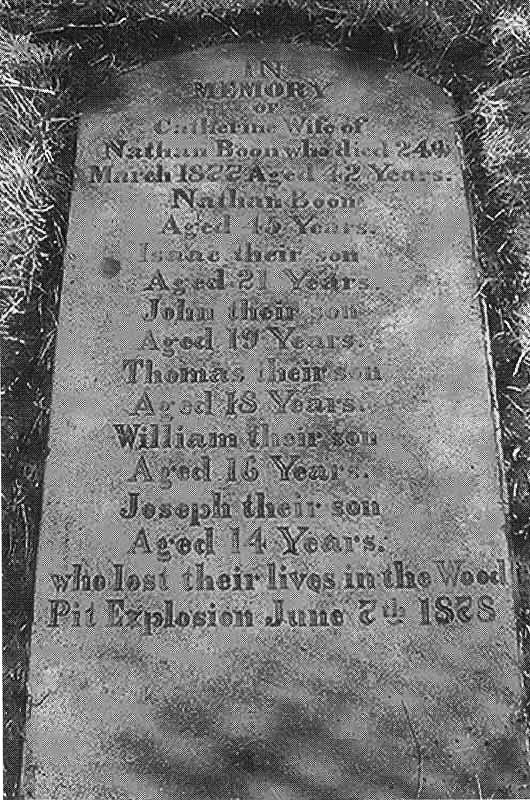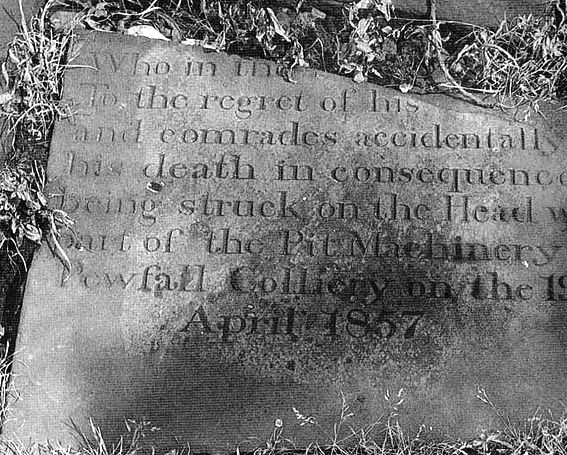
Lying in the next grave are his brother and his son. This could be the largest loss of life by one family in a mining disaster.
The Wood Pit explosion, Haydock of Friday 7th. June 1878 was the worst mining disaster in Lancashire up to that time claiming 189 lives. Many of the victims were buried at St. Thomas and the incumbent, Rev. H. Siddall knew only too well what this meant to the living.
At the following Sunday morning service at St. Thomas’s, Rev. H. Siddall spoke of the disaster. Two of the survivors were in the congregation present in the church. Aaron Marsh and James Heaton gave public thanks to Almighty God for their deliverance. The congregation was deeply affected by the tragedy, and the Rev. Siddall had great difficulty in getting through the service. He spoke of the trials and tribulations of life and went on to say:
‘But besides these ordinary troubles, this life has also its great and heavy burdens, troubles and afflictions which are so great as at first to astonish and paralyse the sufferers. Who amongst us can realise the desolation in the houses of those two hundred men and boys who, two days ago, were as well and active as ourselves? The support, the breadwinners, for hundreds of others besides themselves. Who can picture to its full extent, the desolation and despair of the widows mourning their lost husbands? Mothers their lost sons? Children their lost fathers? Who can tell of the privation yet to be endured by those whose daily bread depended on strong arms of men who shall never earn anything again? No. It is not possible for anyone to realise the amount of suffering, present and future of the relatives of those who have so suddenly been cut from their midst.’
From, WEEP MOTHERS WEEP by Ian Winstanley
Among those buried in the graveyard were Isaac Boon and his five sons. The gravestone rests in peace under the grass in the old part of the churchyard.

Near the entrance gate from Heath Road, there is part of a stone
The graveyard has other mining connections. Near the entrance gate from Heath Road, there is part of a stone.
A search of the local papers and the mining records tells the story.
‘On Saturday last at the colliery owned by Mr. Samuel Frost, Mr. James Frost was at the pit mouth on the lower stage, looking over the barrier with the cage above him. While he was standing like this, the cage was accidentally set in motion and struck him on the head. The whole of the lower jaw and part of the face was torn away and he fell down the shaft. The mangled body was recovered and he was attended to by a doctor but he died on Sunday. He left a wife and two children.’ (Wigan Examiner)
Over fifty years later disaster was to strike again, this time close to home.
Information supplied by Ian Winstanley and the Coal Mining History Resource Centre.
Return to previous page
